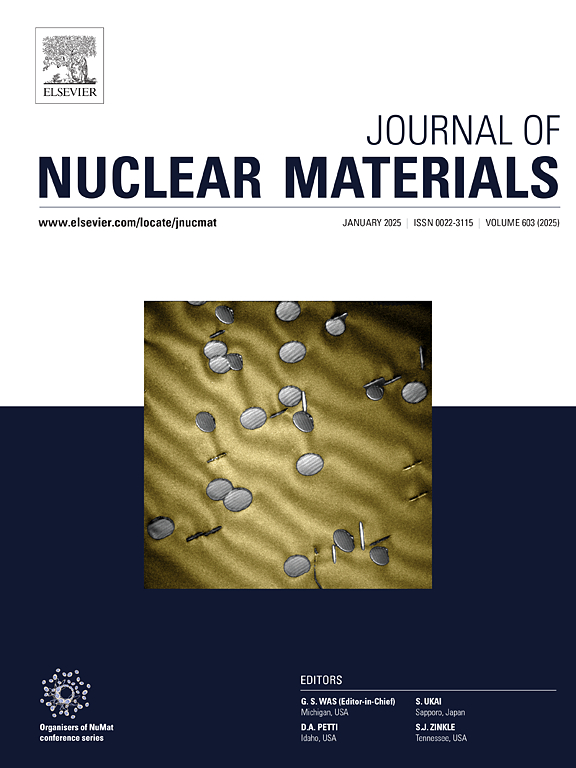A model for trapping and re-solution regarding intra-granular bubbles in UO2, linked to atomic-scale simulations
IF 2.8
2区 工程技术
Q3 MATERIALS SCIENCE, MULTIDISCIPLINARY
引用次数: 0
Abstract
In the literature, a clear definition of the irradiation re-solution frequency of gas from bubbles in the UO2 fuel is absent. Moreover, for intra-granular bubbles, a detailed calculation of the cumulated displaced gas quantities in function of the distance from the radius of the bubble after a re-solution event has never been published. The assessment of these two elements is very useful if we want to increase the adherence of fission gas release codes to our present knowledge of the behavior of fission gases. Hence, we suggest to link the definition of the re-solution frequency to atomic-scale simulations. Furthermore, we present the cumulated displaced gas quantities obtained from Molecular Dynamics calculations, from which we have derived a re-solution profile that can be exploited to better consider the irradiation re-solution phenomenon inside Fission Gas Release codes. On top of that, we have built a new trapping/re-solution model for intra-granular bubbles linked to Molecular Dynamics simulations that can be easily incorporated into Fission Gas Release codes. We also check that the model is properly built through the comparison of the new model against a reference.
求助全文
约1分钟内获得全文
求助全文
来源期刊

Journal of Nuclear Materials
工程技术-材料科学:综合
CiteScore
5.70
自引率
25.80%
发文量
601
审稿时长
63 days
期刊介绍:
The Journal of Nuclear Materials publishes high quality papers in materials research for nuclear applications, primarily fission reactors, fusion reactors, and similar environments including radiation areas of charged particle accelerators. Both original research and critical review papers covering experimental, theoretical, and computational aspects of either fundamental or applied nature are welcome.
The breadth of the field is such that a wide range of processes and properties in the field of materials science and engineering is of interest to the readership, spanning atom-scale processes, microstructures, thermodynamics, mechanical properties, physical properties, and corrosion, for example.
Topics covered by JNM
Fission reactor materials, including fuels, cladding, core structures, pressure vessels, coolant interactions with materials, moderator and control components, fission product behavior.
Materials aspects of the entire fuel cycle.
Materials aspects of the actinides and their compounds.
Performance of nuclear waste materials; materials aspects of the immobilization of wastes.
Fusion reactor materials, including first walls, blankets, insulators and magnets.
Neutron and charged particle radiation effects in materials, including defects, transmutations, microstructures, phase changes and macroscopic properties.
Interaction of plasmas, ion beams, electron beams and electromagnetic radiation with materials relevant to nuclear systems.
 求助内容:
求助内容: 应助结果提醒方式:
应助结果提醒方式:


